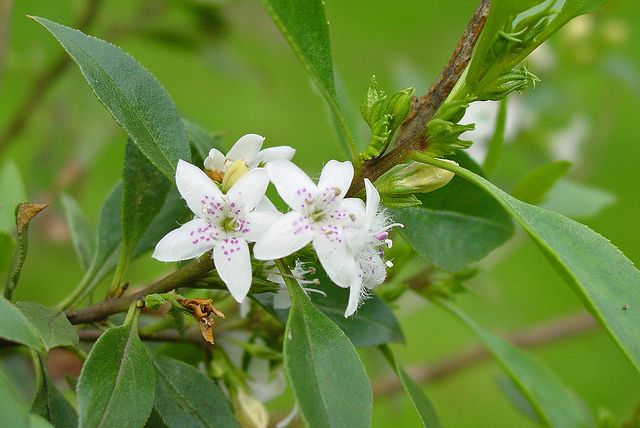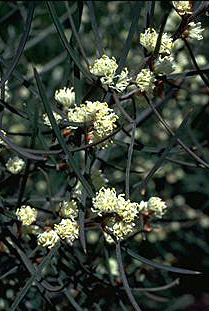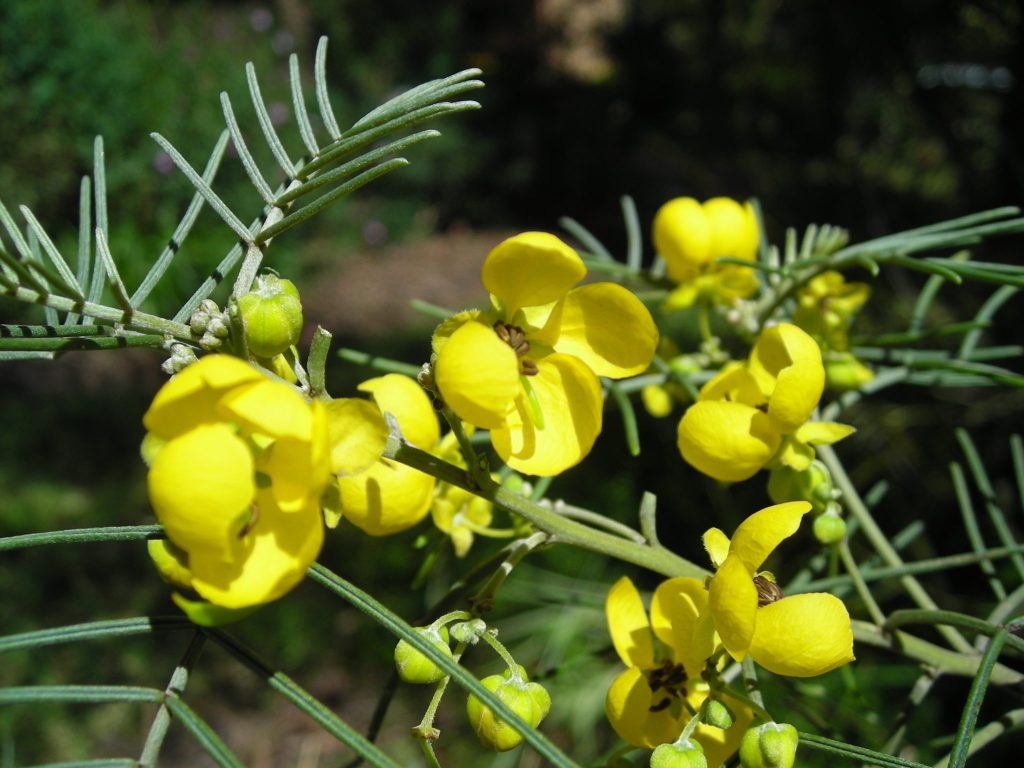Acacia pycnantha
Golden Wattle

Description: Small tree or large shrub: 4-7m tall and 2-6m wide. Grey-green foliage although large and glossy when young. Brilliant globular yellow fragrant flowers in late winter to mid spring. Fast growing, short lived (under 15 years).
Cultivation: Prefers sunny or part shaded spot in well drained soil. Tolerant of most soil types. Moderately drought and frost tolerant.
Aboriginal uses: Gum or resin (eaten or for adhesives) or seeds/fruits eaten
Other:
- Australia’s national floral emblem
- Provides nectar for insects and birds
Allocasuarina verticillata
Drooping Sheoak

Description: Evergreen, shady small to medium-sized tree 6 to 10m on straight trunk and spreading to 4-6 m. Foliage grey-green drooping branches with needles rather than leaves. Fast growing. Long-lived (over 15 years).
Cultivation: Prefers full sun or part shade and well-drained or dry soils.
Aboriginal Uses: Aboriginal name is ‘karko’ in Kaurna language.
Other:
- Use as firewood and fuel for river boats is largely responsible for its massive clearance across SA.
- Male plant has drooping brown/yellow flowers on needle tips. Female plant has round fruit cones.
- Important for some bird species such as the Glossy Black Cockatoo.
- The mat of needles that falls from the tree prevents understorey and can be a nuisance.
Callitris gracilis
Native Pine

Description: Medium size conifer growing up to 12m on a straight trunk and spreading to 3-8m. An elegant ornamental tree with bright green needles. Tiny flower structures are insignificant. Fast growing. Long-lived and hardy.
Cultivation: Well-drained or dry soils. High tolerance to drought and frost.
Aboriginal Uses: Name is ‘narnu’ in Kaurna language. Wood was used for fishing spears.
Other:
- The only native conifer in Adelaide region. Suitable in large gardens only.
- Also known as the Southern or Slender Cypress Pine.
- World’s hardest softwood timber, the wood is termite and pest resistant.
- Fruit is attractive to cockatoos.
- Distinguished from other pines and cypresses by the ‘floppy top’.
Melaleuca lanceolata
Dryland Tea-tree

Description: Dense, shady, dark-barked shrub or small tree to 8 m and spreading to 5m. Leaves small and pointed. White flowers similar to bottle-brush in early summer. Fast growing. Long-lived (over 15 years).
Cultivation: Full sun to part shade. Moderately frost and drought tolerant.
Other:
- Bird and butterfly attracting.
- Responds to pruning.
- Used to make tea by early settlers.
Pittosporum phylliraeoides
Native Apricot

Description: Small tree to around 6m, sometimes to 10m and can spread as wide as 5m. Graceful weeping habit, with long, slender, bright green leaves. Slow growing and long lived. Small yellow flowers in summer. Yellow orange fruit. More recently known as Pittosporum angustifolium.
Cultivation: Easy to grow. Prefers full sun and well-drained soil. Drought and frost resistant.
Aboriginal Uses: an infusion of the leaves, seeds, fruit pulp or wood was used to treat bruises, muscle-ache, sprains and cramps.
Other:
- Widespread in inland Australia.
- Bird attracting.
- Infusions were drunk to treat coughs and colds as well as to induce lactation.
- Also known as Gumbi-Gumbi.
Myoporum viscosum
Sticky Boobialla

Description: A medium shrub reaching a height of up to 2 metres and spreading to 1.5 metres. Featuring sticky leaves with a strong, unpleasant odour. Features clusters of white flowers with purple spots and large fleshy fruit with a central stone.
Cultivation: Cuttings strike readily but may take some time. Grows best in full sun.
Aboriginal Uses: Myoporum species have been known to have anti-bacterial, anti-inflammatory and other medicinal properties.
Other:
- Bird and butterfly attracting
- Hardy plant that can tolerate salt spray
- Useful as a low screening plant
Hakea carinata
Erect Hakea

Description: A medium to tall shrub reaching a height of up to 3 metres with a spread of 1.5 metres. Featuring narrow, stiff, leathery leaves with cream flowers in Spring and small oblong to egg shaped black/brown seeds.
Cultivation: Tube stock is readily available. Plants grown from seed are more successful than from cuttings as for the most part, Hakea do not strike roots easily. Prefers well drained soil and grows best in full sun.
Other:
- Prickly foliage provides a useful wildlife habitat
- Drought tolerant
- Useful as a low screening plant
- Seeds are a food source for bird life.
Senna artemisioides
Silver Cassia

Description: Growing to 3 metres tall and 2m across, this woody shrub gets its silvery appearance from short white hairs on the branchlets and leaves. It flowers in small, bright yellow clusters which are followed by straight brown pods
Cultivation: Successful in a range of climates, Senna is particularly suited to drier areas with full sun and good drainage. Propagation can be carried out from both seed treated with boiling water and hardened cuttings of current season’s growth.
Aboriginal Uses: The ash of this plant was mixed with Pituri, another bush medicine, into a ball for chewing.
Other:
- Senna is a recognised larval food source for several species of butterfly and moth
- Especially useful for screening and wind protection.
